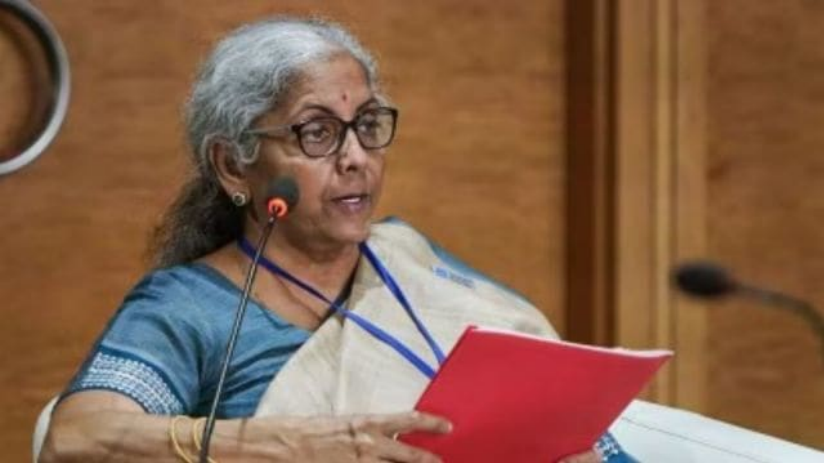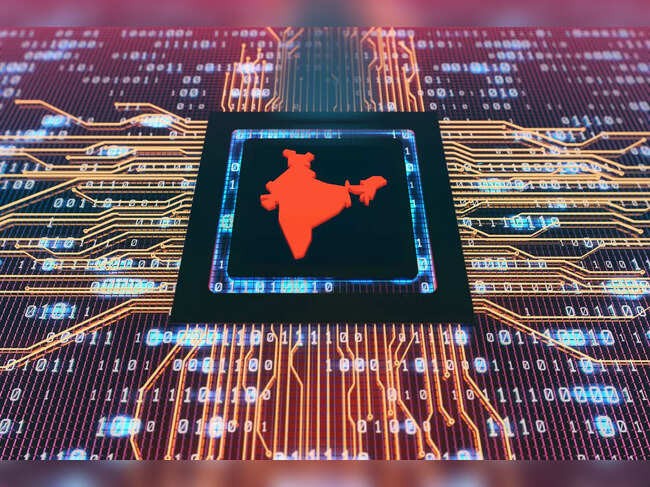Copyright infringement not intended
Picture Courtesy: Indian Express
Context:
Finance Minister Nirmala Sitharaman said India needs more big, world-class banks and the government is discussing with the Reserve Bank of India (RBI) and existing banks on how to achieve this.
Current Status of banking sector in India:
- The gross nonperforming asset (GNPA) ratioin the sector has fallen to multidecadal lows (3% by March 2025) according to the Reserve Bank of India (RBI).
- According to Reserve Bank of India (RBI)’s Financial Stability Report (FSR – June 2025)scheduled Commercial Banks’ (SCBs) capital to riskweighted assets ratio (CRAR) reached a record 17.3% by March 2025.
- Growth in lending and credit is steady: for example, credit growth of 9.5% yearonyearin June 2025.
- Massive growth in digital payments: The Unified Payments Interface (UPI) dominates, with hundreds of millions of users and very large transaction volumes.
- While credit has grown 11.3%yearonyear (as of early 2025) in some measures, deposit growth has been lower (10.6% or less) and this has pushed the incremental loantodeposit ratio (LDR) higher (126% in some analyses) which could strain banks’ funding.
Evolution of Banking sector in India:
Early Phase: Pre-Independence (Before 1947)
- Characteristics:Banking was largely unregulated, with a mix of private, family-owned, and some joint-stock banks.
- Key Players:Presidency banks (Bank of Bengal, Bank of Bombay, Bank of Madras) which later merged to form Imperial Bank of India in 1921.
- Focus:Primarily catered to trade, commerce, and urban elites; rural credit was limited.
- Limitations:Frequent bank failures due to poor management, lack of regulation, and limited public confidence.
Nationalization Era (1969–1990s)
- 1969:14 major commercial banks were nationalized to improve credit availability to rural areas and priority sectors.
- 1980:Another 6 banks were nationalized, increasing government control over banking.
Objectives:
- Financial inclusion, especially rural and semi-urban areas.
- Control over credit flow to strategic sectors.
Outcomes:
- Rapid branch expansion (especially rural).
- Increase in deposits and credit for agriculture and small-scale industries.
- Growth in public confidence, though profitability and efficiency were issues.
Liberalization and Reform Era (1991–2000s)
- Trigger:Economic liberalization in 1991.
- Objectives:Modernize banks, improve efficiency, strengthen financial stability, and introduce competition.
Key Reforms:
- Introduction of Private Sector Banks(e.g., ICICI, HDFC).
- Licensing of foreign banksto enhance competition.
- RBI prudential norms: Capital adequacy, NPAs, risk management.
- Technological adoption: ATMs, core banking, electronic funds transfer.
- Outcome:Banking became more competitive, customer-oriented, and technology-driven.
Consolidation and Modernization Phase (2010–2025)
- Objectives:Build large, globally competitive banks; strengthen public sector banks; leverage technology; promote financial inclusion.
- Key Developments:
- 2017–2020:Major mergers of PSBs (e.g., SBI’s associate banks, Vijaya Bank & Dena Bank with Bank of Baroda, and merging 10 PSBs into 4).
- Digital Banking Revolution:UPI, mobile banking, digital wallets, fintech collaboration.
- Financial Inclusion:Pradhan Mantri Jan Dhan Yojana (PMJDY) accounts, small finance banks, regional rural banks.
- Asset Quality Improvement:GNPA reduction, stronger capital buffers, recapitalization of weaker banks.
- Examples:
- State Bank of India:Leading PSB, large-scale mergers, and digital adoption.
- Yes Bank:Private-sector turnaround and foreign investment inflow.
Why there is a need of big and world class bank?
Mobilizing Large-scale capital: India’s growing economy requires massive investments in transport, energy, digital infrastructure, and urban development. Small banks often cannot raise or lend at such a scale whereas, large and well-capitalized banks can mobilize huge amounts of deposits and savings.
Example: China’s “Big Four” banks (Industrial and Commercial Bank of China Limited, China Construction Bank, Agricultural Bank of China, Bank of China) fund massive infrastructure and industrial projects domestically and internationally.
Large Indian banks like SBI or Bank of Baroda post-merger now have higher capital and lending capacity, allowing them to participate in big-ticket projects.
- Global competitiveness and cross-border operations:World-class banks help domestic companies operate internationally, support trade finance, foreign investment, and remittances. For e.g.; HSBC and Citibank operate globally, providing cross-border payments, trade finance, and currency hedging.
- Resilience and risk management: Larger banks with better capitalization, technology, and risk frameworks are more resilient to shocks (like economic slowdowns, NPAs, or crises). For e.g. During COVID-19, large banks with robust risk management and digital infrastructure were better able to provide relief packages and continue operations. Whereas, Smaller, under-capitalized banks faced liquidity issues globally (e.g., the collapse of smaller regional banks in the US in 2023).
- Economies of scale and technology adoption: Big banks can invest in technology—digital banking, AI risk management, cybersecurity—reducing per-unit cost of services and improving efficiency. Example: UPI system in India: Led by large banks, enabling billions of transactions daily with minimal cost.
Globally, JP Morgan Chase and Bank of America invest heavily in AI for fraud detection, reducing operational risk.
Financial Inclusion and Priority Sector Lending: Big banks can balance commercial objectives with social objectives such as rural banking, Marginal Small Medium Enterprise (MSME) financing, and low-income credit programs. Example - SBI and its merged entitiesnow reach rural India more efficiently while also lending to corporates.
Brazil’s Banco do Brasil combines large-scale operations with extensive rural finance programs, showing that big banks can be socially inclusive.
Challenges:
- Funding & Liquidity Pressures:Banks rely on deposits to fund loans. If deposits grow slower than credit demand, banks face liquidity pressures and higher funding costs. In India, the incremental Loan-to-Deposit Ratio (LDR) reached 126% in February 2025. Credit growth (11.3% Year-on-Year) outpaced deposit growth (10.6%).
- Asset Quality & Emerging Credit Risks: New credit segments like unsecured retail loans, NBFC exposures, and real estate may carry higher default risks. For e.g. U.S. regional banks with heavy commercial real estate exposure facing defaults.
- Technology & Cybersecurity Risk:Digitalization introduces risks like cyberattacks, data breaches, and AI/fintech dependencies.
- Margin & Profitability Pressures: Competition, rising funding costs, and regulatory requirements reduce banks’ net interest margins (NIM) and profitability. For e.g. Mid-sized and small banks in India face pressure due to slower deposit growth and higher competition.
- Competitive Disruption & Inclusion Challenges: Fintechs, neo-banks, and big tech disrupt traditional banking, if they fail to innovate. McKinsey report highlights the need for Indian banks to integrate into digital ecosystems and serve SMEs.
Government of India’s key reforms aimed at creating big and world-class banks:
Capital Strengthening Measures;
- ₹3.1 lakh crore infused (2017–2021)under:
- Indradhanush Plan
- Atmanirbhar Bharatinitiatives
- Objective:Strengthen public sector banks’ (PSBs) capital base and support credit expansion.
Governance and Efficiency Reforms;
- Bank Boards Bureau (BBB)replaced by Financial Services Institutions Bureau (FSIB).
- Aim:Improve leadership selection, governance, and professionalism in PSBs.
- Enhanced Access & Service Excellence initiative (EASE) Reforms (since 2018):
- Introduced performance-linked incentives.
- Focused on customer service, digitalisation, and accountability.
Digital and Technological Transformation;
- Public Tech Infrastructure (PTI):
- Joint RBI–Government initiative to build an integrated financial ecosystem.
- Combines digital identity (Aadhaar), payments (UPI), and data-sharing systems.
Internationalisation and Global Expansion;
- International Financial Services Centre (IFSC), GIFT City (Gujarat):
- Provides a global banking and offshore financial hub.
- Encourages Indian banks to operate internationally and attract foreign investment.
Regulatory and Stability Frameworks;
- Implementation of Basel III Norms:
- Ensures adequate capital, leverage control, and liquidity coverage.
- Aligns Indian banks with global prudential standards.
- Financial Stability and Development Council (FSDC):
- Coordinates regulation among RBI, SEBI, IRDAI, and other financial regulators.
- Focus on maintaining overall financial stability and systemic risk management.
Way Forward:
- Creating Scale with Efficiency: To compete in the global financial landscape, Indian banks must achieve both scale and efficiency. While consolidation has strengthened capital and reach, the next phase should focus on quality of growth— improving productivity, profitability, and risk discipline.
- Deepening Financial Sector Reforms: A truly world-class banking system requires deep structural reforms. Public sector banks must gradually move towards greater autonomy, professionalism, and accountability. This involves reimagining ownership patterns, strengthening board governance, and aligning management incentives with performance outcomes.
- Harnessing Digital and Technological Transformation: The future of banking is digital, data-driven, and customer-centric. India’s success with UPI and fintech innovation provides a strong foundation for developing Public Digital Infrastructure (PDI)in finance.
- Global Integration and International Expansion: India’s economic growth and expanding trade require banks that can operate seamlessly across borders. Strengthening the International Financial Services Centre (IFSC) at GIFT Cityand promoting the overseas expansion of Indian banks will deepen India’s global financial footprint.
- Building Sustainable and Responsible Banking: World-class banking is not only about profit or size but also about purpose and sustainability. Integrating ESG (Environmental, Social, and Governance)frameworks into banking decisions will align the sector with global sustainability goals.
- Strengthening Risk Management and Financial Stability: As banks grow larger and more interconnected, systemic risk increases. Therefore, building robust risk governance systemsis essential.
Conclusion
India’s banking sector is evolving from stability to global competitiveness. Reforms in capital, governance, and digital innovation have created a strong base for growth. The next step is to build banks that are not just large, but efficient, technologically advanced, globally connected, and socially responsible. With continued reforms and innovation, India is well-positioned to develop truly world-class banks that drive inclusive and sustainable economic growth.
Source: Indian Express
|
Practice Question
Q. “India’s banking sector must evolve from being large in size to being world-class in quality.” Discuss the key reforms required to achieve this transformation. (250 words)
|
Frequently Asked Questions (FAQs)
India’s growing economy requires banks with strong capital, global reach, and advanced technology to support large-scale projects, international trade, and financial inclusion.
Big banks can manage higher risks, fund infrastructure, and compete globally — similar to banks in the U.S., China, or Japan.
- Low capital baseof many public sector banks (PSBs).
- High NPAsand weak risk management.
- Governance issuesand limited autonomy in PSBs.
- Need for technological upgradationand cybersecurity.
- Balancing inclusion with profitability.
EASE (Enhanced Access & Service Excellence) aims to improve customer service, technology adoption, and governance in PSBs.
It promotes performance-linked incentives, digital lending, and better financial inclusion — aligning Indian banks with global best practices.












